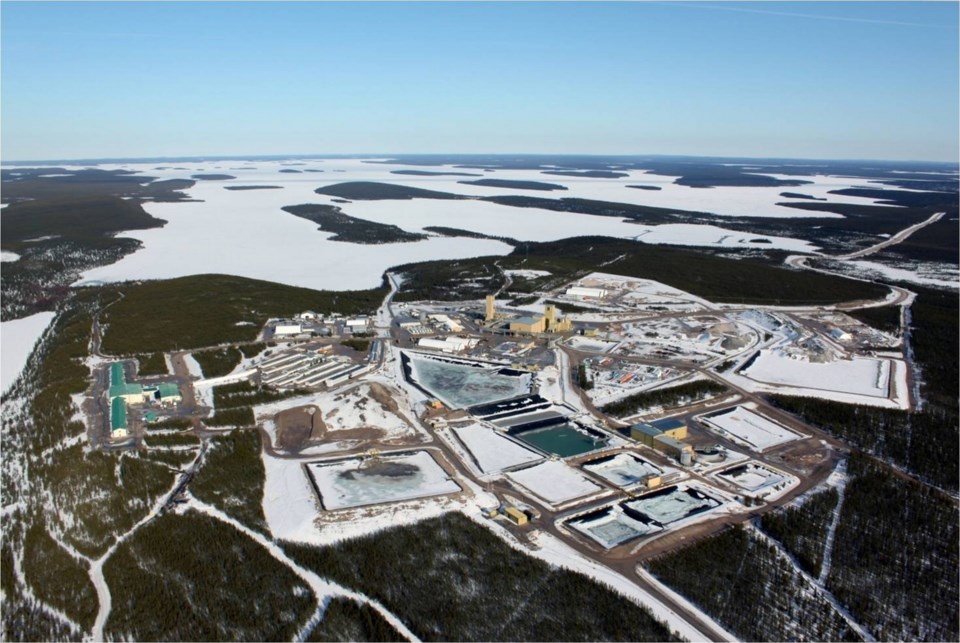Back in October 2017, one of the world's oldest mining companies set up an office in Sudbury. Thyssen Mining's goal was simple: the company needed a base of operations, and with development of the Ring of Fire chromite deposit imminent, they wanted that base to be in a mining hub.
Greater Sudbury seemed the natural choice.
"There's a lot more action going on (at the Ring of Fire) than most people think,” said Tom Reid, who leads Thyssen's local office.
“We have been having meetings — I can't get into details — but things are moving much better there than people think. I'm optimistic that a mine will go into construction there no later than 2020. It is still a lot slower than what everybody wants. However, some people thought it was never going to go."
"That's part of the reason for setting up the office here and building a local relationship here, because this will be the base of operations for eastern Canada well in advance of anything," said Reg Ryan, Thyssen's business development officer.
The company chose Sudbury because it's the largest mining centre in this part of Canada, while still in an urban setting.
"And similar to the offices we've set up in the United States, we've seen more that owners are asking for one-stop shopping with their mining contractors,” Ryan said. "In Sudbury, there are no training issues and there are so many experienced miners."
“Anything we do in eastern Canada will be managed out of here,” Reid said. “Sudbury is the hub. It's the best place to do business, from a mining contractor's perspective, in eastern Canada. So this is where we think we should be."
The Ring of Fire wasn't the only draw, although it is a big one. Reid said Northern Ontario's mining sector is due for a rebound, and Thyssen wanted to be in a good position to take advantage of that once it happened.
Reid said the Nickel capital was the clear choice for the company's base of operations in eastern Canada.
"I'm very optimistic about Ontario," Reid said. "In a couple of years, things are going to be very busy. I'm not alone in saying this; all the contractors are quite aware of what I'm aware of, as well. It's not just me. There is a turnaround coming here."
Thyssen wanted to be in town for what Reid calls “the transition year," when the groundwork is established for the mining industry's comeback.
Long established out west, the Saskatchewan-based Thyssen Mining Canada is part of a German-based company that dates back to the 1800s. With global sales of around $4 billion a year, it's one of the largest mine-builders in the world.
Thyssen made its name in Canada in the 1960s, when its cold shaft-sinking technology make a big impression on the potash industry. The company pioneered a technique for sinking shafts in wet ground by freezing the ground first, then stacking iron rings one on top of the other and creating a water-tight shaft known as the Blairmore Ring.
Another thing that makes Thyssen unique is its track record in signing joint venture agreements with First Nations. The most successful came in 1997 with the formation of Mudjatik Thyssen Mining Joint Venture, which saw First Nations and Métis communities participate in economic development opportunities in the northern Saskatchewan uranium mines. The company committed to training a local workforce that would, over time, make up a larger and larger portion of mine workers.
"We're probably the first company in North America to do that, and that's been running for 20 years," Reid said. "I think when they started, they were at 20 per cent First Nations workforce. Now we're in excess of 50 per cent."
Ryan said since the company arrived in eastern Canada they have been working on developing relationships that will lead to more joint ventures.
"To succeed here, you need to have a very good relationship with First Nations," Ryan said. "Some of these projects are still several years down the road. We want to set (joint venture agreements) up and have them fully implemented by the time they begin."
Reid said the company is close to setting up a joint venture with a First Nation near Rainy River, a project that will create up to 100 jobs.
Longer-term, he said the company is well-positioned for opportunities in the Ring of Fire, where agreements with First Nations are key to making progress.
In fact, Reid said a lot more progress is being made with the Ring of Fire than most people are aware of, and he expects some big announcements in 2018.
"We're aggressively working on it,” he said. “We're steadily trying to make the contacts with First Nations and do whatever we need to do to get those joint ventures and agreements in place.
"The one advantage we have is we have set them up before and have developed such good relationships,” Ryan said. “They can speak with the First Nations in Saskatchewan to learn how it slowly grew, how we went from 20 per cent to, I think, 60 per cent First Nations workforce."
Reid said they can back up the promises they make by pointing to their track record in other communities, something that makes Thyssen unique, he said. Some employees started with no mining experience and are now in senior management positions. That puts the company in a strong position when it comes to the massive chromite discovery in northwestern Ontario.
"We have good relationships and we made a lot of commitments to First Nations over the last 20 years."




